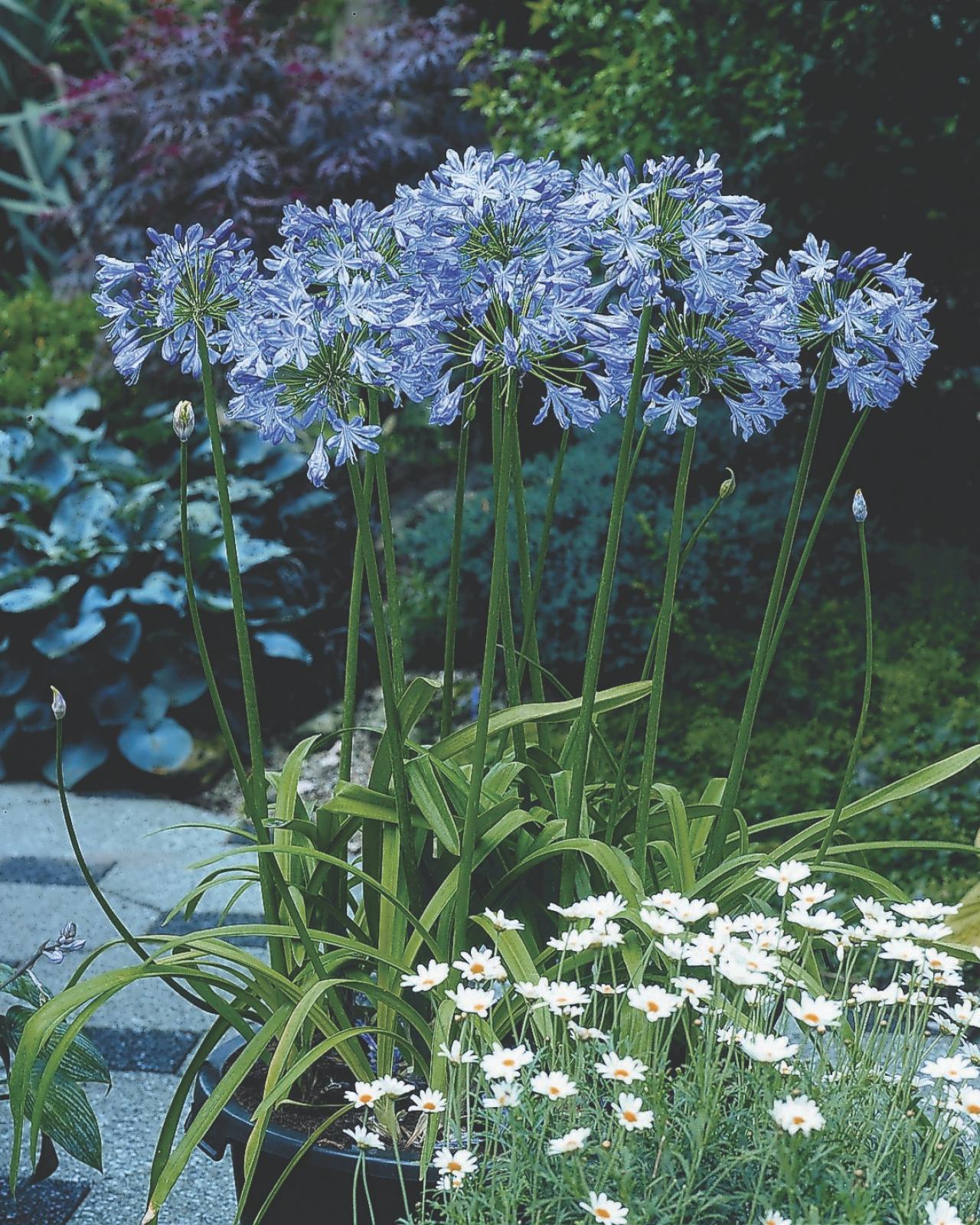Agapanthus Friend Plants: Perfect Pairings for Your Garden
Agapanthus Friend Plants: Perfect Pairings for Your Garden
Blog Article
Grasping the Art of Agapanthus Treatment: Necessary Steps for Healthy And Balanced Growth and Dynamic Flowers
In the world of horticulture, the cultivation of agapanthus stands as a rewarding undertaking for those that seek to support these elegant blooming plants. From selecting the appropriate selection to mastering pruning techniques, the trip towards growing thriving agapanthus plants is complex and holds the crucial to opening the full capacity of these botanical treasures.

Choosing the Right Agapanthus Range

When picking the ideal Agapanthus variety for your yard, think about factors such as climate viability, bloom color, and development habit. Additionally, consider the climate in your area to make sure the Agapanthus variety you select can prosper in your certain problems. Understanding the development practice of different Agapanthus varieties is crucial for appropriate positioning within your garden.
Perfect Planting Conditions
Thinking about the ideal ecological demands is essential for successful Agapanthus growing. Agapanthus plants are sensitive to cool temperature levels and should be safeguarded from frost during winter months.
To make certain healthy and balanced development and lively flowers, plant Agapanthus bulbs at a deepness of regarding 2-4 inches and area them 8-12 inches apart. Including natural matter, such as compost, to the dirt can improve drainage and fertility, promoting robust root advancement. Mulching around the base of the plants assists retain dampness and reduces weed growth. Normal watering is important, especially throughout the expanding period, to keep the soil continually damp however not saturated.
Watering and Fertilizing Tips
Maintaining proper dampness levels and offering important nutrients are vital elements in the care regimen for Agapanthus plants. When it comes to sprinkling Agapanthus, it is crucial to strike a balance. These plants favor continually damp soil however are prone to root rot if overwatered.
Feeding Agapanthus is essential for advertising healthy and balanced growth and prolific flowers. Apply a balanced fertilizer, such as a 10-10-10 formula, in the early springtime as new growth emerges. Repeat this application every 6-8 weeks throughout the growing period. Avoid excessive fertilization, as it can bring about rich vegetation at the expense of blooms. Always follow the maker's guidelines for proper dilution and application approaches. By adhering to these watering and click here for info feeding pointers, you can ensure your Agapanthus plants flourish and create vibrant, resilient blooms.
Trimming Techniques for Agapanthus
Trimming Agapanthus plants at the proper times and with correct strategies is crucial for maintaining their wellness and advertising ideal growth and blooming. The excellent time to trim Agapanthus is in late wintertime or very early springtime prior to brand-new growth arises. Start by removing any type of yellowing or dead leaves near the base of the plant. Cut them as close to the ground as possible without damaging the emerging shoots.
Deadheading invested flowers can also redirect the plant's power into producing more blooms rather than setting seeds. If you desire to accumulate seeds for proliferation, leave some blossoms to fully grown and completely dry on the plant.
Keep in mind to use clean, sharp devices to make exact cuts and lower the threat of presenting illness. Agapanthus. Routine pruning will aid Resources keep your Agapanthus looking healthy and balanced and neat while guaranteeing an abundant display of lovely blossoms
Managing Common Pests and Illness
After making certain proper trimming strategies for Agapanthus, it is important to address usual bugs and illness that can affect the health and wellness and vigor of these plants. Agapanthus plants are usually durable yet can still drop victim to specific issues. One usual pest that impacts Agapanthus is the Agapanthus gall midge. This tiny, orange fly lays its eggs in the vegetation, resulting in distorted growth and blossom buds that fail to open up. To combat this insect, prune and ruin any type of afflicted plant parts and consider making use of insecticidal soap.
In addition, Agapanthus plants can experience from origin rot if they are grown in improperly draining soil. By being watchful and taking prompt activity against conditions and parasites, you can assist your Agapanthus plants flourish and create dynamic flowers. Agapanthus.

Final Thought
Finally, understanding the art of agapanthus care entails choosing the appropriate variety, supplying suitable planting problems, proper watering and fertilizing, proper pruning methods, and attending to common bugs and illness. By adhering to these vital steps, you can make sure healthy growth and vivid blossoms for your agapanthus plants. Remember to on a regular basis keep track of and maintain your plants to advertise their overall wellness and long life.
To make certain healthy growth and lively flowers, plant Agapanthus bulbs at a deepness of about 2-4 check my reference inches and room them 8-12 inches apart. By following these watering and feeding tips, you can ensure your Agapanthus plants flourish and produce vivid, lasting blooms.
One typical insect that influences Agapanthus is the Agapanthus gall midget. Furthermore, Agapanthus plants can experience from root rot if they are planted in badly draining pipes soil. By complying with these necessary steps, you can make sure healthy development and vibrant blossoms for your agapanthus plants.
Report this page